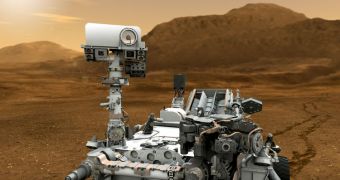Before the Mars Science Laboratory (MSL) mission can launch to Mars, experts in charge of managing the mission still have to surpass a large number of challenges, the conclusions of a new study show.
The report was put together by the independent Inspector General watchdog group, which works for the American space agency in assessing how well critical missions fare. The results of the paper are not at all encouraging.
The new data were released on Wednesday, June 8. Experts working for the watchdog group say that the MSL and its team will need to pas numerous technological, monetary and time-related constraints before they can launch the new mission.
The main component of the MSL is the 1-ton Curiosity rover, the largest explorations robot ever constructed. Building the Mini Cooper-sized, nuclear-powered vehicle set NASA back by about $2.5 billion, even though the mission was originally supposed to cost far less.
Experts with the independent analysis group found that even now, in the 11th hour, additional funds might be required in order to successfully complete MSL on time. The rover is now scheduled to launch between late November and early December.
One of the most important conclusions of the research was that people in charge of managing the MSL severely underestimated that costs associated with handling all the technological hurdles that remain to be passed, if the mission is to launch on schedule.
“They did issue three specific recommendations, and they actually were ones that the project internally had already identified and were working on,” told reporters Dave Lavery, who is the NASA program executive for solar system exploration.
“They were not things that were unexpected or are real big surprises for us. They are things that are normal and characteristic of large complex projects like these,” he added during interviews yesterday.
NASA Inspector General Paul Martin explains in the new report that MSL “is the most technologically challenging interplanetary rover ever designed,” which may partially explain the delays and setbacks.
“We do feel very confident right now that given the work yet to go and the schedule that we have, that that amount of margin is sufficient. We should be all set for a successful launch on the 25th of November,” Lavery explained.
If NASA is unable to launch the mission during this year's launch window, then it will have to wait for about 26 months until the next window of opportunity opens. Mars and Earth do not enter the proper configuration for launch except once every two years or so.
The next launch window for the MSL will be in late January – early February 2014, Space reports. “NASA agreed with our findings, concurred with our recommendations, and in its response described a series of planned actions,” the new report concludes.

 14 DAY TRIAL //
14 DAY TRIAL //